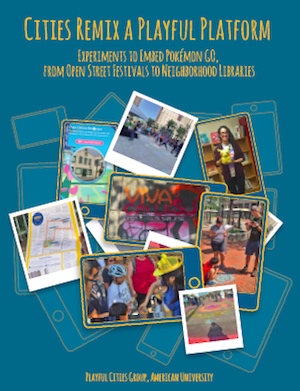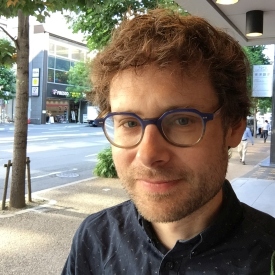
Live near DC? Come to my talk at DC IdeasFest on “Gaming for the City/ Pokémon Go and DC.” Hear about a new kind of game that can connect neighbors, support local business, explore our history, and even tackle socioeconomic segregation. The story goes much deeper than Pokémon Go. Saturday, May 6th at 10:30am.
The theme for DC IdeasFest is amazing: “we hold the audacious belief that the growth we are experiencing [in DC] can and must be equitable, that we must be a city that is inclusive of all.” See their full list of talks.
My talk is about using games for community engagement and neighborhood impact…

(Screenshot of DC play of Pokémon Go via DCLeeFilms)
DESCRIPTION: Play can strengthen cities, gather open data, and introduce neighbors. New forms with mobile media are combining urban streets with digital flows of information, from Pokémon Go to mapping neighborhood history. Games can get us out in public space, building social capital and ties to local business.
How can we shape the impact of such games in our city and its communities? How will our approach be different than what is emerging in Copenhagen or Los Angeles? With examples and conversation, we’ll explore the answers.
Time and location: Saturday, May 6th from 10:30am- 11:30am. In the Carnegie Library (Gallery 3) of Washington D.C., 801 K St NW, 20001 (+ Google Map). If possible, register in advance.
p.s. — This talk builds on our Games+Cities event from January, and my new course American University on “Playful Cities.”

 I will be moderating a conversation at the National Archives on “
I will be moderating a conversation at the National Archives on “
 (2) June 30th in Troyes, France at the biennial Communities and Technologies
(2) June 30th in Troyes, France at the biennial Communities and Technologies  Here is where you can catch me at ICA this year. (ICA is the big communication conference, this year in San Diego, CA in late May.)
Here is where you can catch me at ICA this year. (ICA is the big communication conference, this year in San Diego, CA in late May.)


 Next week I’ll be
Next week I’ll be 
